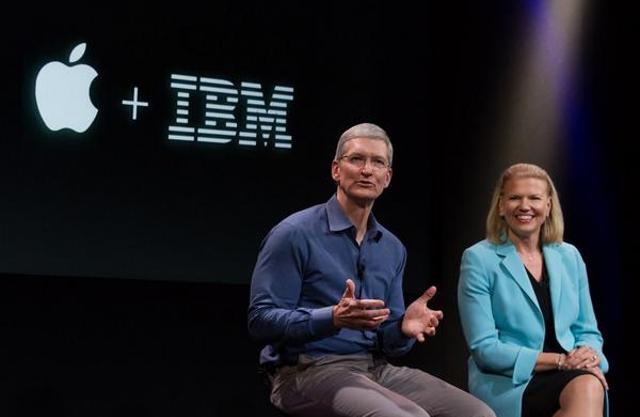
It now appears even that number was low. An internal video, leaked on YouTube, shows Jeff Smith – IBM’s Chief Information Officer – speaking about the company’s intentions to rapidly leap from Windows to the Mac.
The video details Smith’s conversation with Apple head-hanchos. “I’d really like to break a log-jam here,” he recalls saying. “I’d like to be able to offer these to everyone who can use it. We’ve got to find a way to make the overall cost the same or lower to PCs to make that happen.”
Apple’s representatives apparently balked at the mention of lowering costs at first, according to Smith, but became more interested when Smith indicated IBM could buy up to 200,000 MacBooks a year – ten times the volume of Apple’s largest corporate customer.
A rapid move away from Windows machines to Mac systems also means cutting at least some ties with Lenovo, the company that purchased IBM’s personal computer business in 2005. Since then, IBM has continued to buy substantial numbers of ThinkCenter and ThinkPad systems for internal use. A such, it represents an even greater transition than it might for another, similarly sized company.
However, IBM does not plan to abandon Windows entirely. The decision to move to Mac will apparently be a choice, not a mandate, and the company plans that “50 to 75 percent” of employees could convert to Macs. That’s a pretty large margin of error, and perhaps indicates that IBM is still ensure about how strongly it should commit to the Mac.
The partnership between the companies stems from recent collaboration between Apple and IBM on other projects. The two entered a partnership in July, 2014 to “transform enterprise mobility” with IBM services optimized for iOS, and the companies have also worked together on Watson Health Cloud, which provides secure analytics for HealthKit and ResearchKit.
It’ll be interesting to see how this pans out. IBM’s decision to purchase large numbers of Macs wouldn’t be substantial enough to drastically impact Apple’s financials, as the company sold almost 20 million in 2014. Even so, it would be a symbolic coup in the enterprise market, and may increase Mac’s appeal to other corporate customers.
Editors' Recommendations
- These 6 tweaks take MacBooks from great to nearly perfect
- If you buy one MacBook Air alternative, make it this one
- The case for buying the M2 MacBook Air over the M3 model
- Which color MacBook should you buy? Here’s how to pick
- Why you should buy a MacBook Air instead of a MacBook Pro


